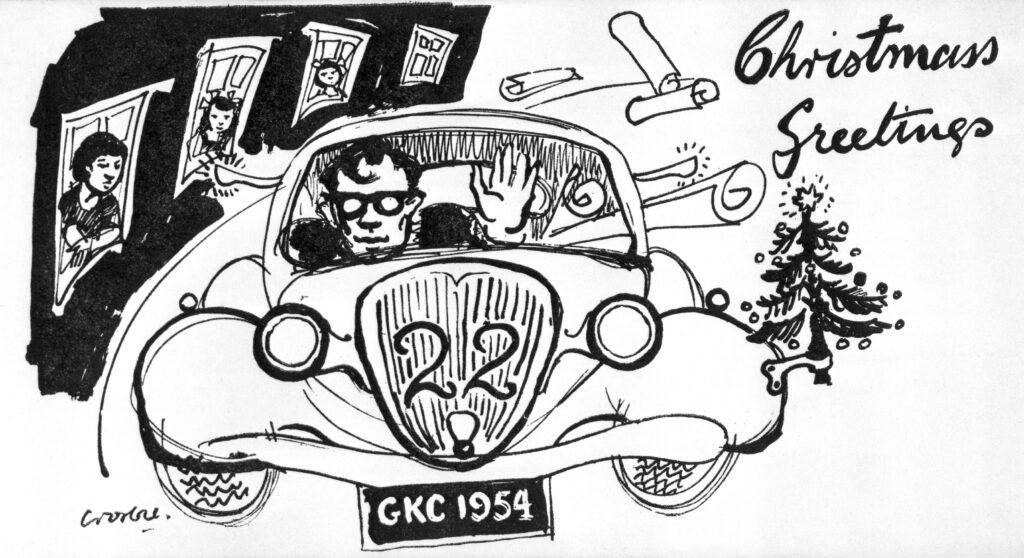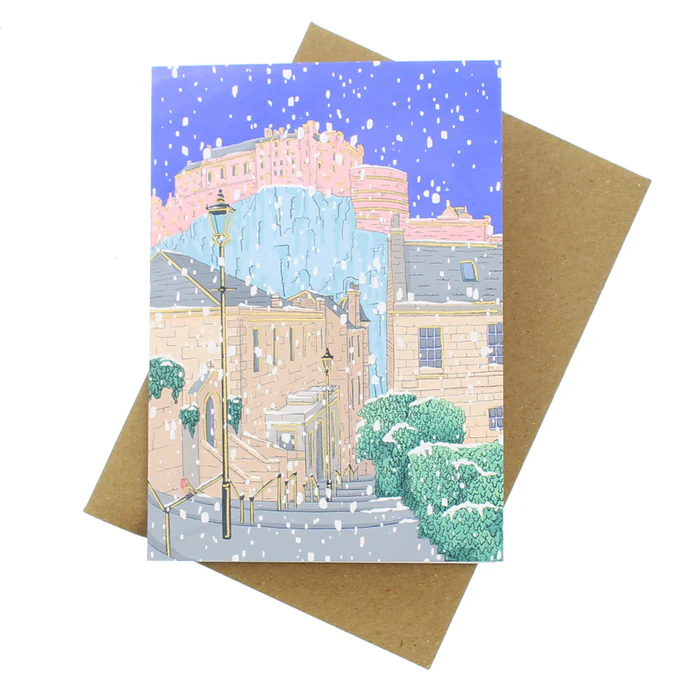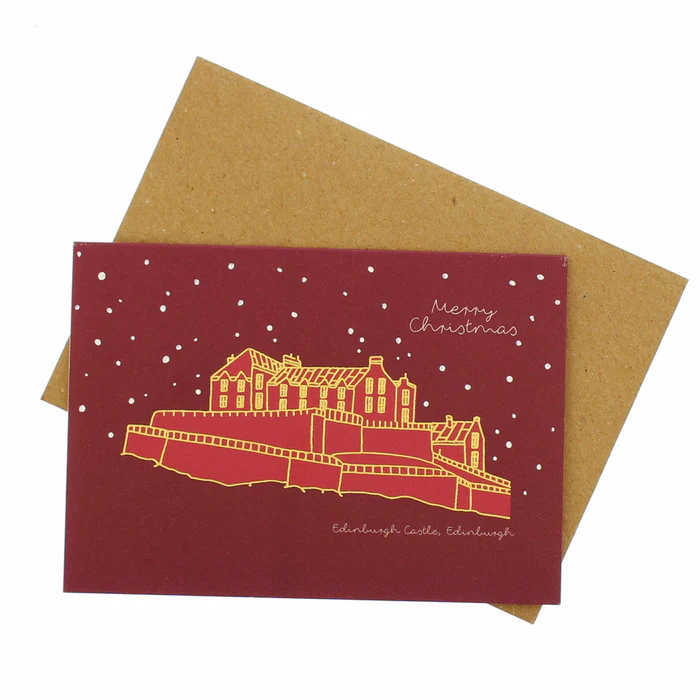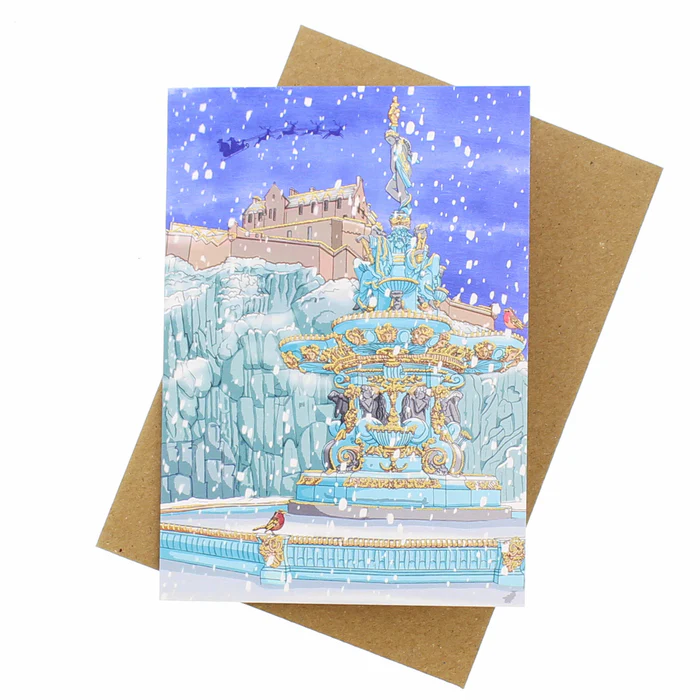Whether you’re sending Christmas cards by post or opting for the e-version, many of us will be receiving a colourful array of season’s greetings again this year. But what makes the ultimate jolly Christmas card and why are we even sending them?
From a prize-winning Christmas cow to Christmas wishes from Tibet, we ho-ho-hope you find these Christmas cards as fascinating as we did.
A Christmas card tradition!
Did you know that the first commercial Christmas cards started to appear in the Victorian age? In 1843 to be precise! We don’t know if it makes him the real Father Christmas (card), but Sir Henry Cole is often named as the inventor of the commercial Christmas card.
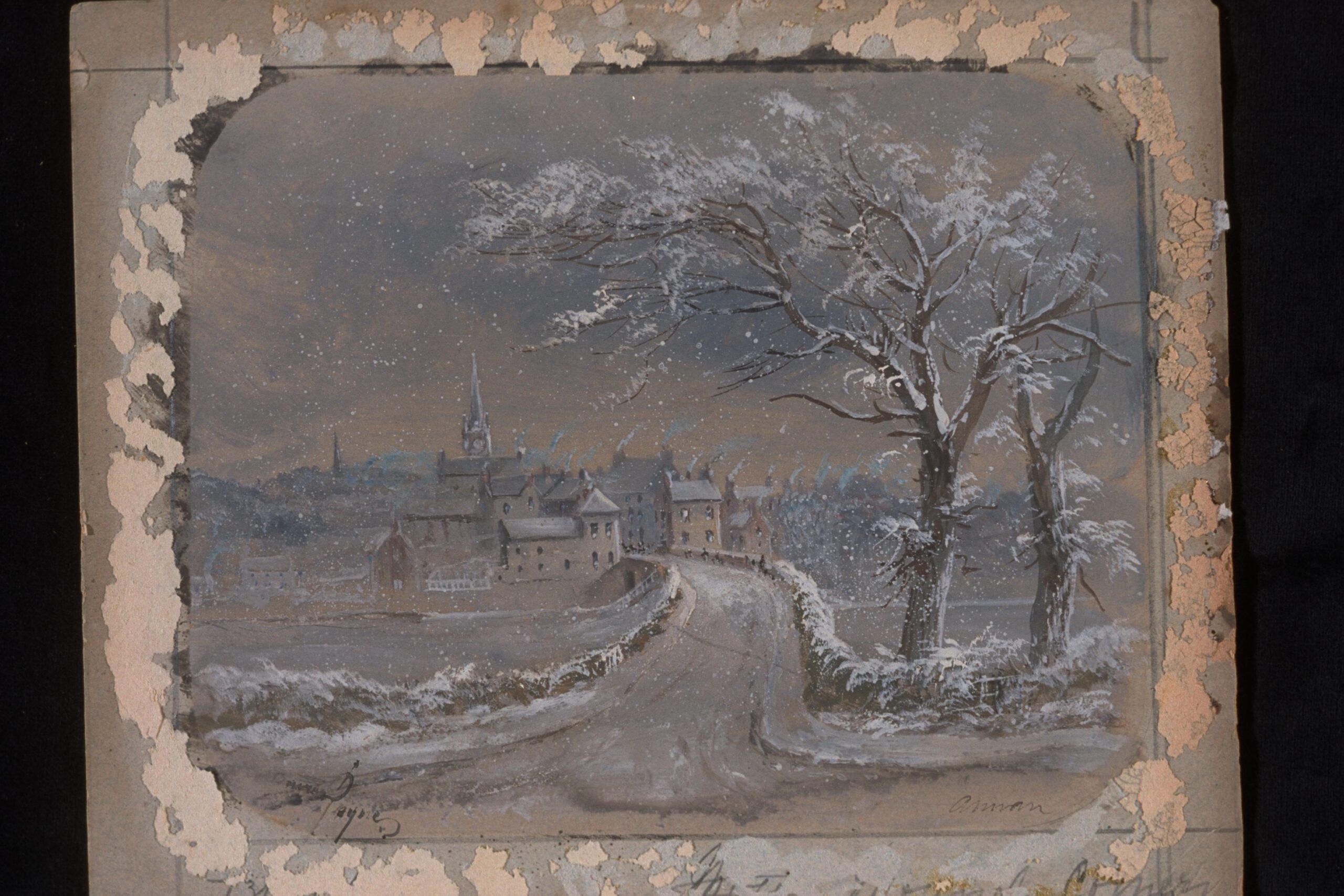
This small painting shows late Victorian Annan in the snow. It’s one of several Christmas cards the artist, David Payne, sent to his relatives in Annan. David Payne, born Annan, 1844, was apprenticed as a house painter but exhibited at Royal Scottish Academy. © Dumfries & Galloway Council – Historic Resources Centre. Zoom in on trove.scot
Sir Henry Cole was a British civil servant, London art dealer and first director of the V&A. He helped reform the British postal service making postage more affordable and accessible to the population.
Cole might have come up with the idea to save time! Faced with a large volume of handwritten Christmas wishes, he thought of a festive card that could be mass-produced and easily sent to friends and family.
Early Christmas cards had pictures of typical festive scenes such as Christ’s birth in Bethlehem, carol singers and Christmas trees. In the 20th century, more secular pictures became popular for Christmas card illustrations.
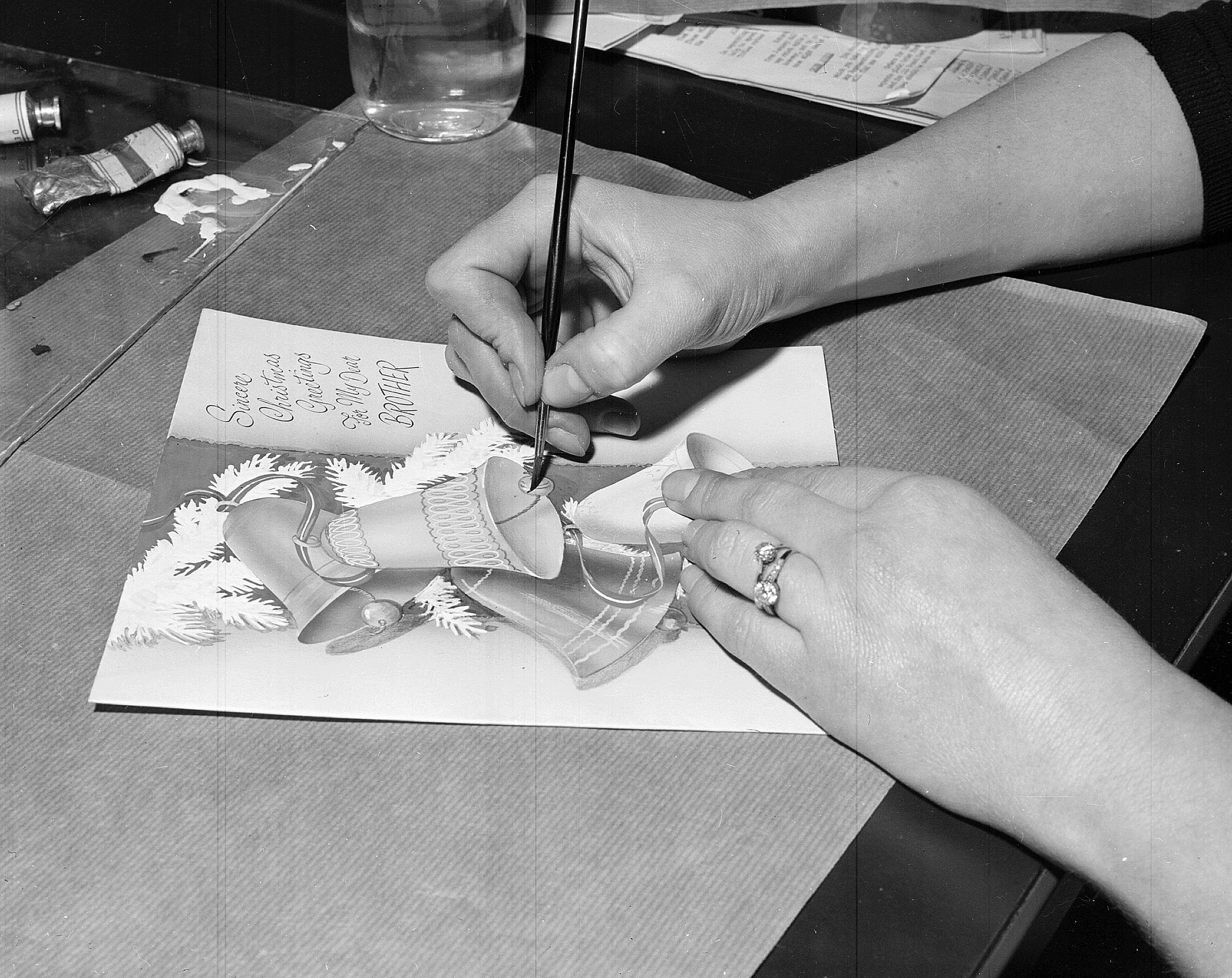
Valentine and Sons Ltd – Christmas card makers – Miss Jean Anderson puts finishing touches to card © The Scotsman Publications Ltd. Licensor trove.scot
Have a holly jolly Christmas (card)
Over the decades, Christmas card designs evolved to reflect changing artistic styles, societal trends, and cultural influences. A pinch of humour doesn’t go amiss when sending seasonal wishes to your loved ones. But novelty cards have been around for longer than you might think.
This card from around 1920 shows a young chap ‘Johnnie Raw’ in Highland dress, carrying a bottle of whisky, ready to ‘first foot’ his friends. The giant sole of Johnnie’s foot folds down to reveal the last few lines of the poem, which talks of Johnnie getting really drunk!
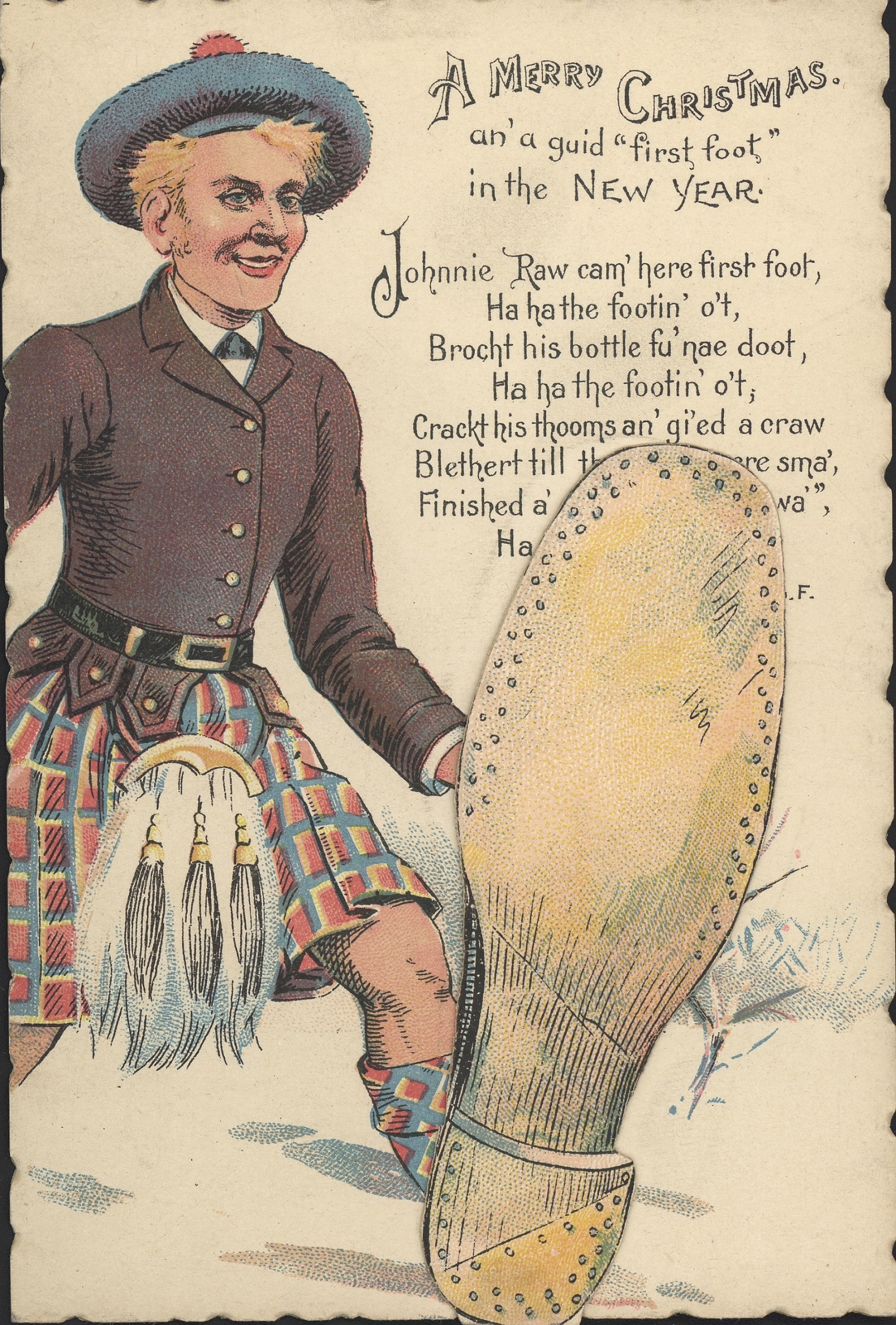
In Scotland, the tradition of ‘first footing’ states that the first person over your doorway after midnight on Hogmanay, should carry a dram of whisky, piece of coal for the fire and a piece of food. These symbolic gifts ensure the household will never go cold or hungry in the coming year. © Scottish Life Archive. Licensor trove.scot
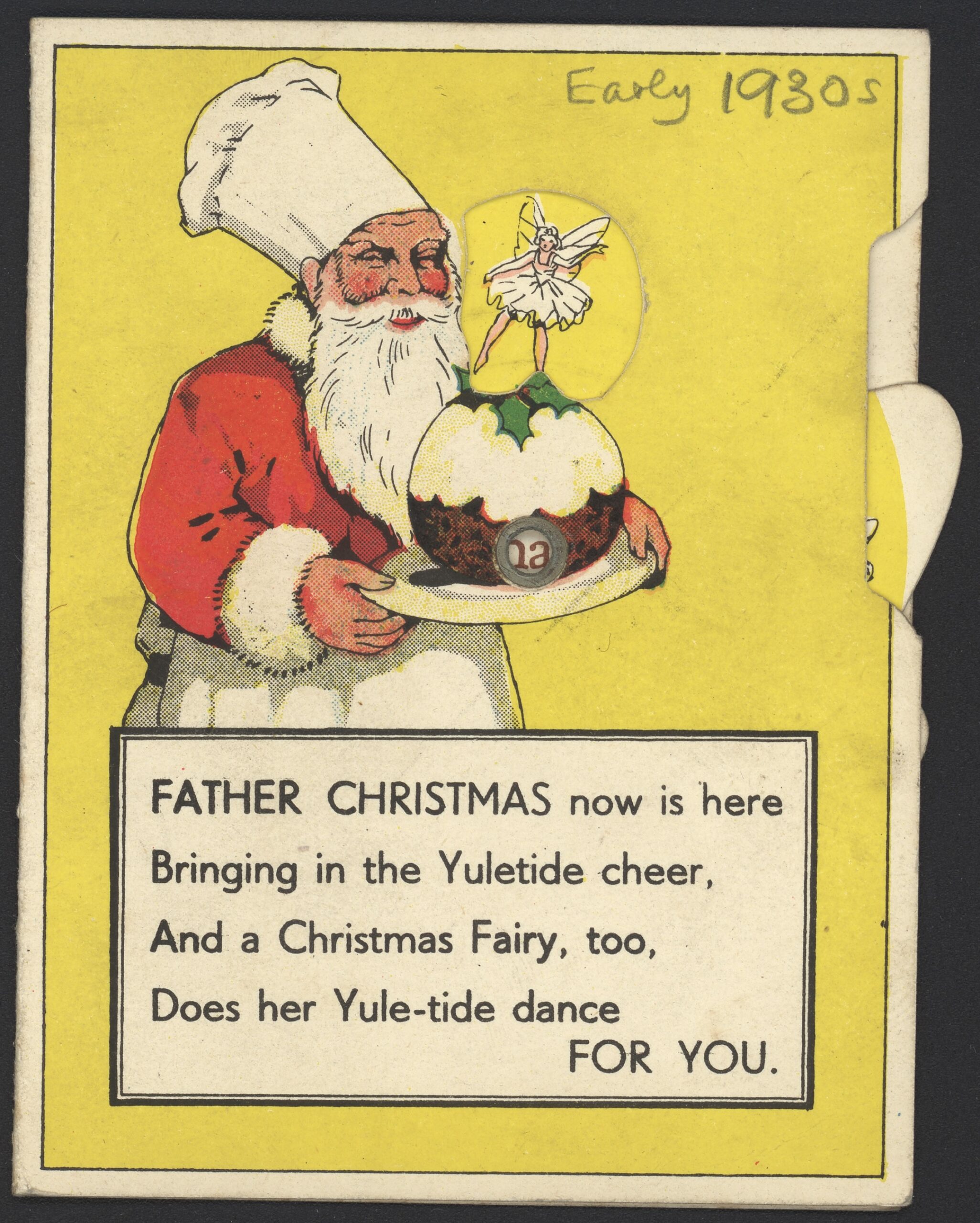
This is a novelty card from the 1930s. It has a wheel that can be turned to make the fairy dance on the Christmas pudding. Licensor trove.scot
Over the years, charities also recognised the potential of the heartfelt tradition of Christmas cards. Many began producing their own ranges to raise funds for various causes, and to help them raise revenue for the coming year.
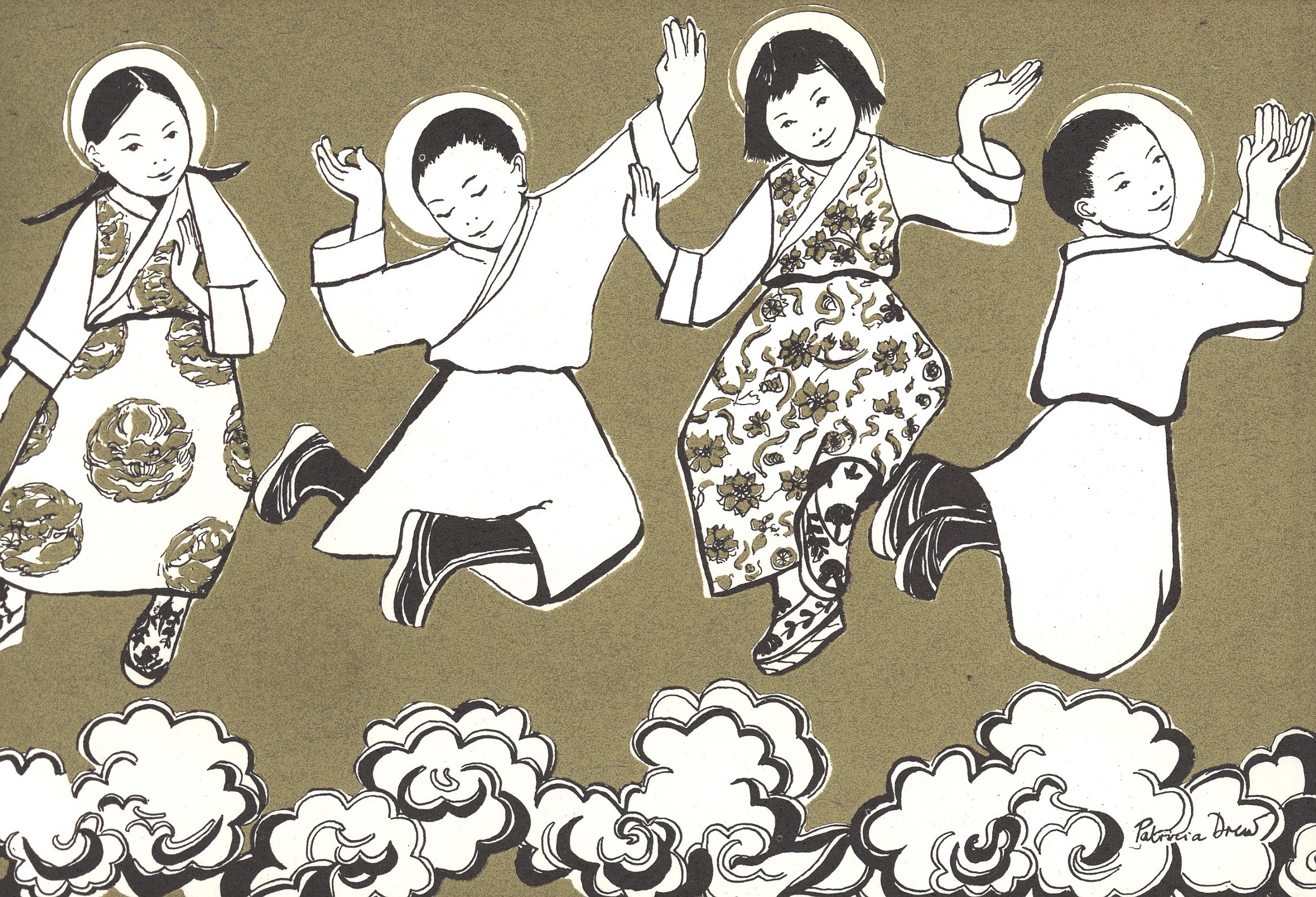
This card from 1980 shows four Tibetan children in national dress. The proceeds from the Christmas cards went towards a children’s charity in Bengal, India. © Scottish Life Archive. Licensor trove.scot
We’re no exception to this! We have our own range of Christmas cards on Stòr
so you can wish your loved ones a happy Christmas with your favourite castle.
An archaeologist for Christmas
In the world of archaeology, Brian Hope-Taylor is well-known, particularly for his work around the ancient site of Yeavering in Northumberland, England. Perhaps less well-known is the archaeologist’s artistic side. Hope-Taylor designed his own cards for special occasions, including Christmas cards!
We did our own little excavation and found a selection of his designs in our archives.
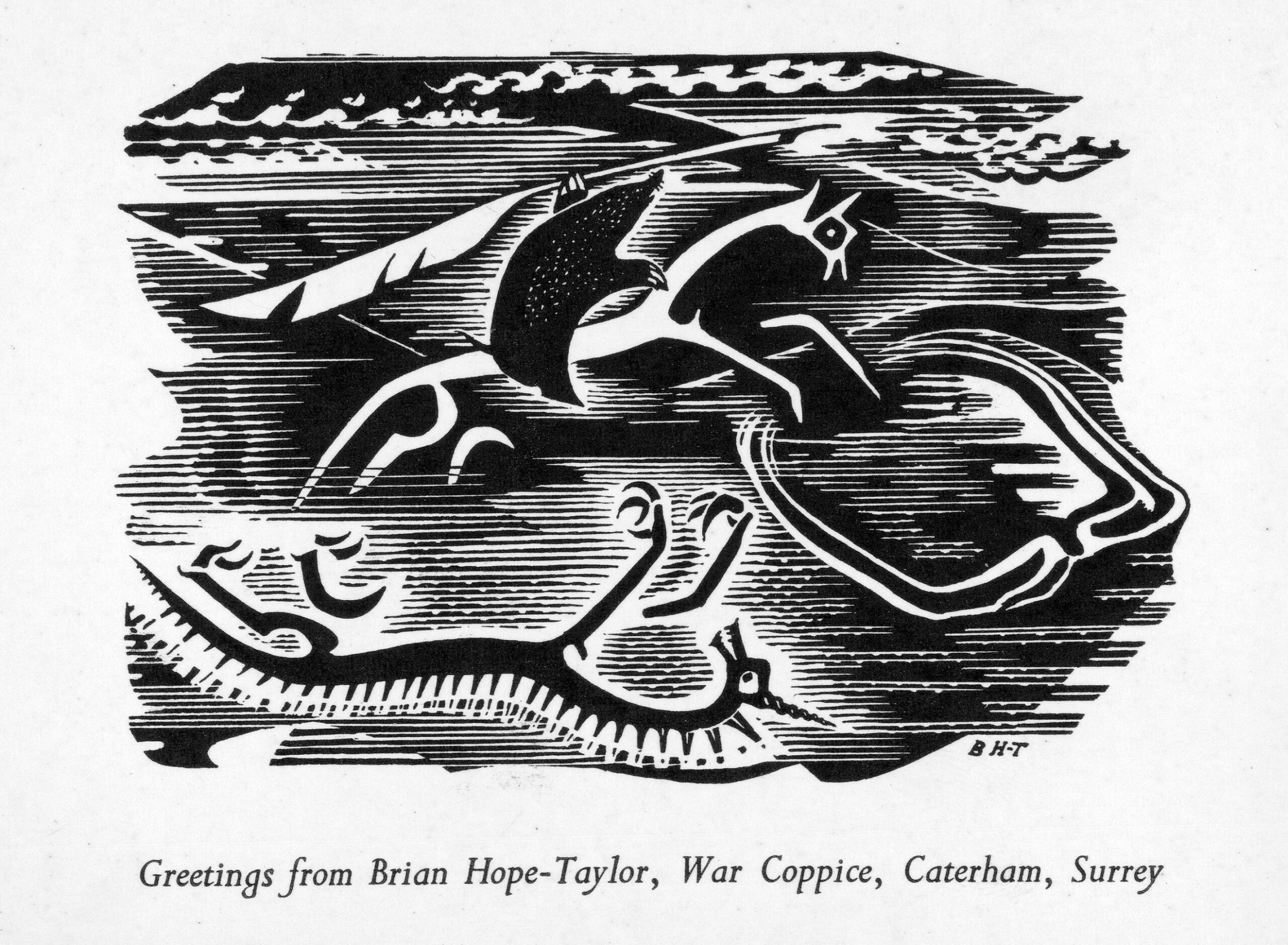
In this Christmas card we can see a mole with a quill pen mounted on the Uffington White Horse with a dragon below. This design was also used in a book of essays dedicated to Stuart Piggott, another distinguished archaeologist. Zoom in on trove.scot to enjoy the mole’s happy wee face.
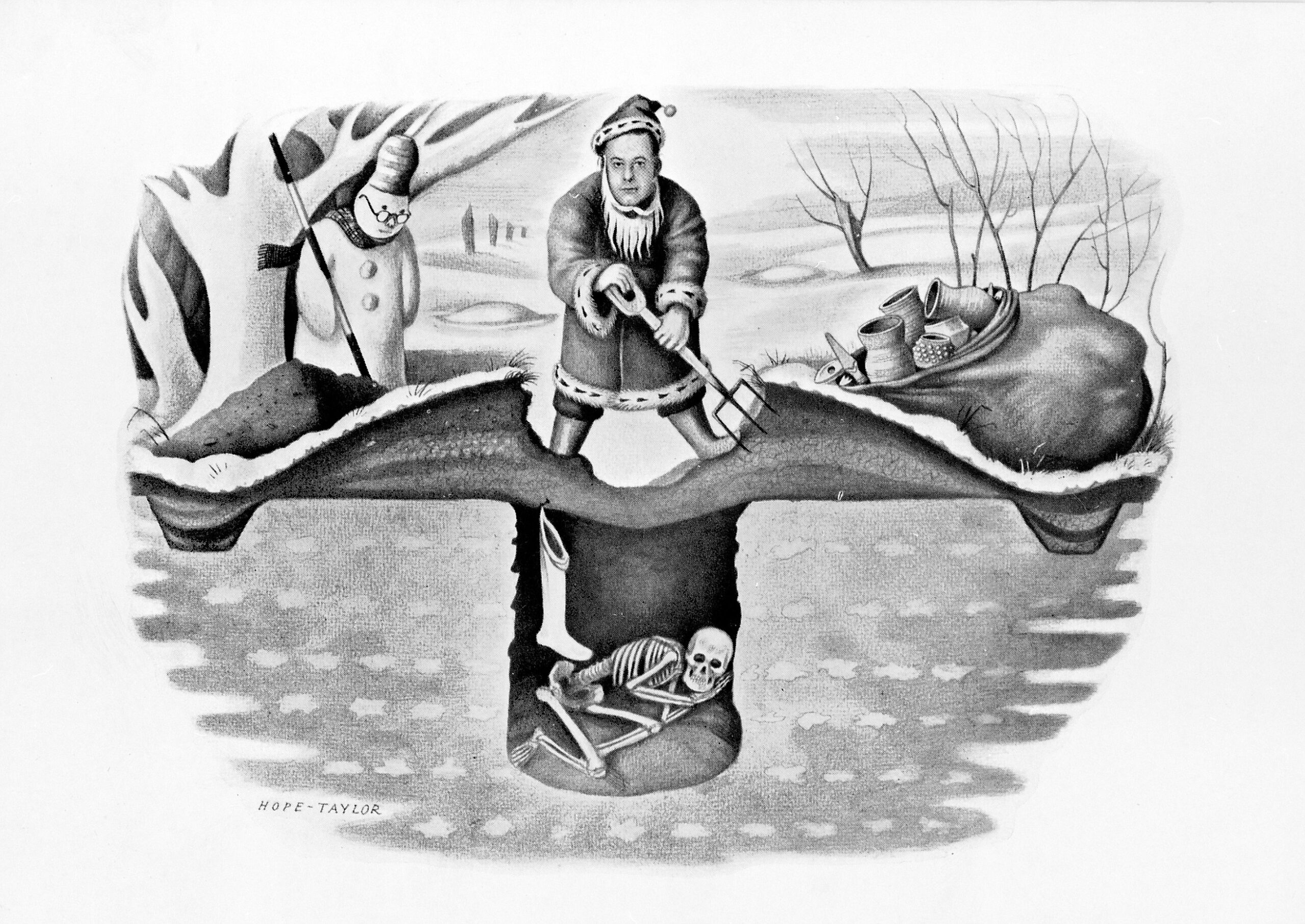
A man dressed as Santa Claus can be seen excavating a burial mound with a sack full, not of toys, but archaeological artefacts. Is this the perfect card for an archaeologist? Zoom in on trove.scot for all the details
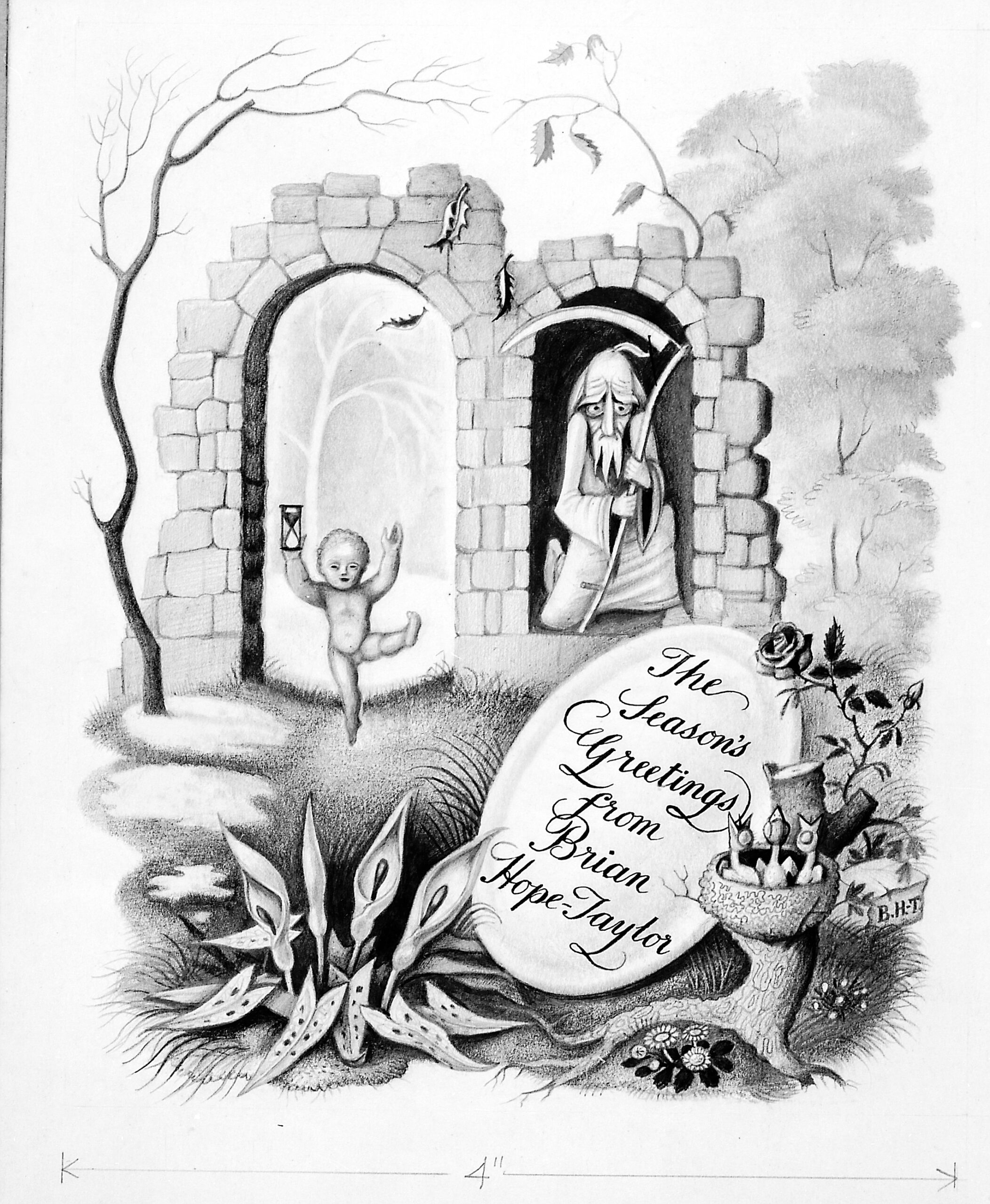
The card appears to be a reference to the passing of time. A ruined building, a small child holding an hour glass and an old man holding a scythe are the main figures in this image. The old man could be likened to the grim reaper or death. Take a closer look on trove.scot
Christmas wishes from the front
Embroidered silk postcards were popular with British soldiers serving on the Western Front in France during World War One. Many bore sentimental messages or patriotic slogans and emblems. They were not of the highest quality but that’s not surprising as acquiring the supplies to make the cards will have been difficult.
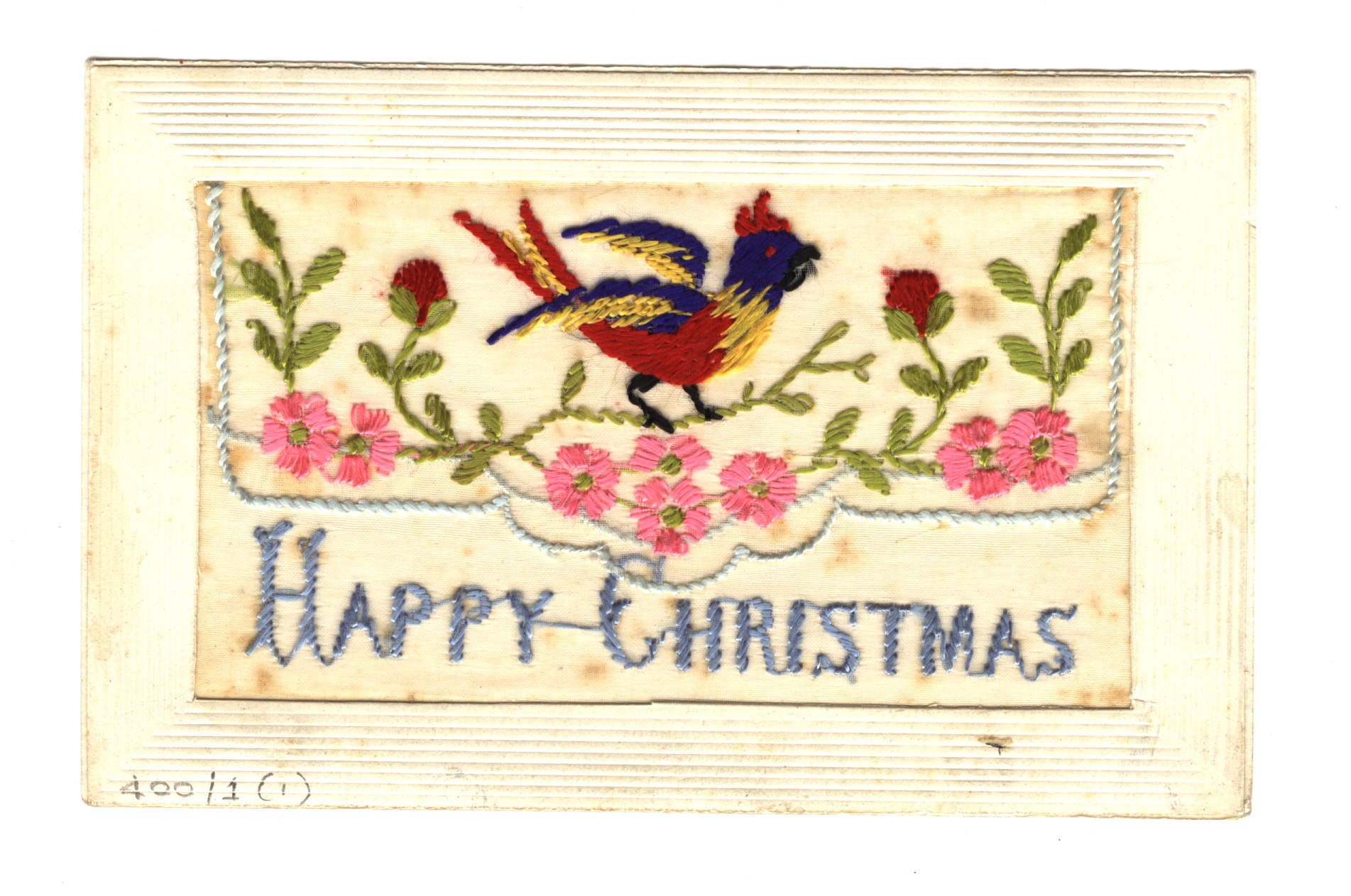
This embroidered Christmas card is from World War One. © Angus Council. Licensor trove.scot
Alfred Biermann was from the textile manufacturing town of Bielefeld in Germany. He was a German prisoner of war during World War II and spent part of his captivity in Aberdeenshire working on Cultercullen farm at Udny Station.
During that time he formed a close friendship with the farmer, Alfred Marr, and his family. At Christmas 1946, Alfred made a Christmas card for the Marrs.
This scene is Alfred’s interpretation of the Scottish countryside in Winter. Not surprisingly, given his circumstances, Alfred had clearly never seen a Scottish red deer and instead has substituted a moose!
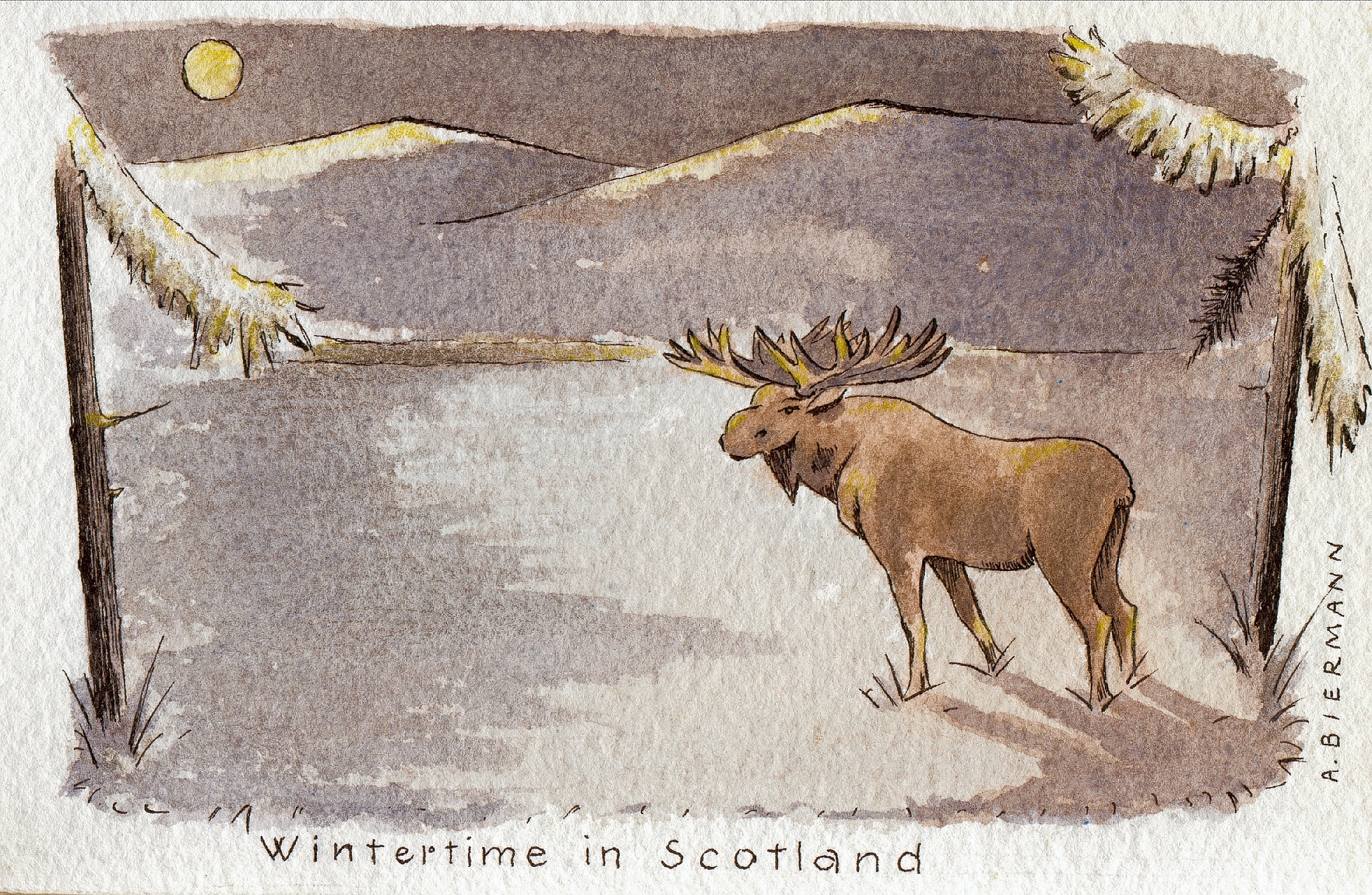
© Martyn L Gorman.
Merry Coo-ristmas!
From a Christmas moose to a potentially prized pasture princess! A more unconventional Christmas card is probably this one by Mr T. Frame from North Quarter farm in Lanarkshire.
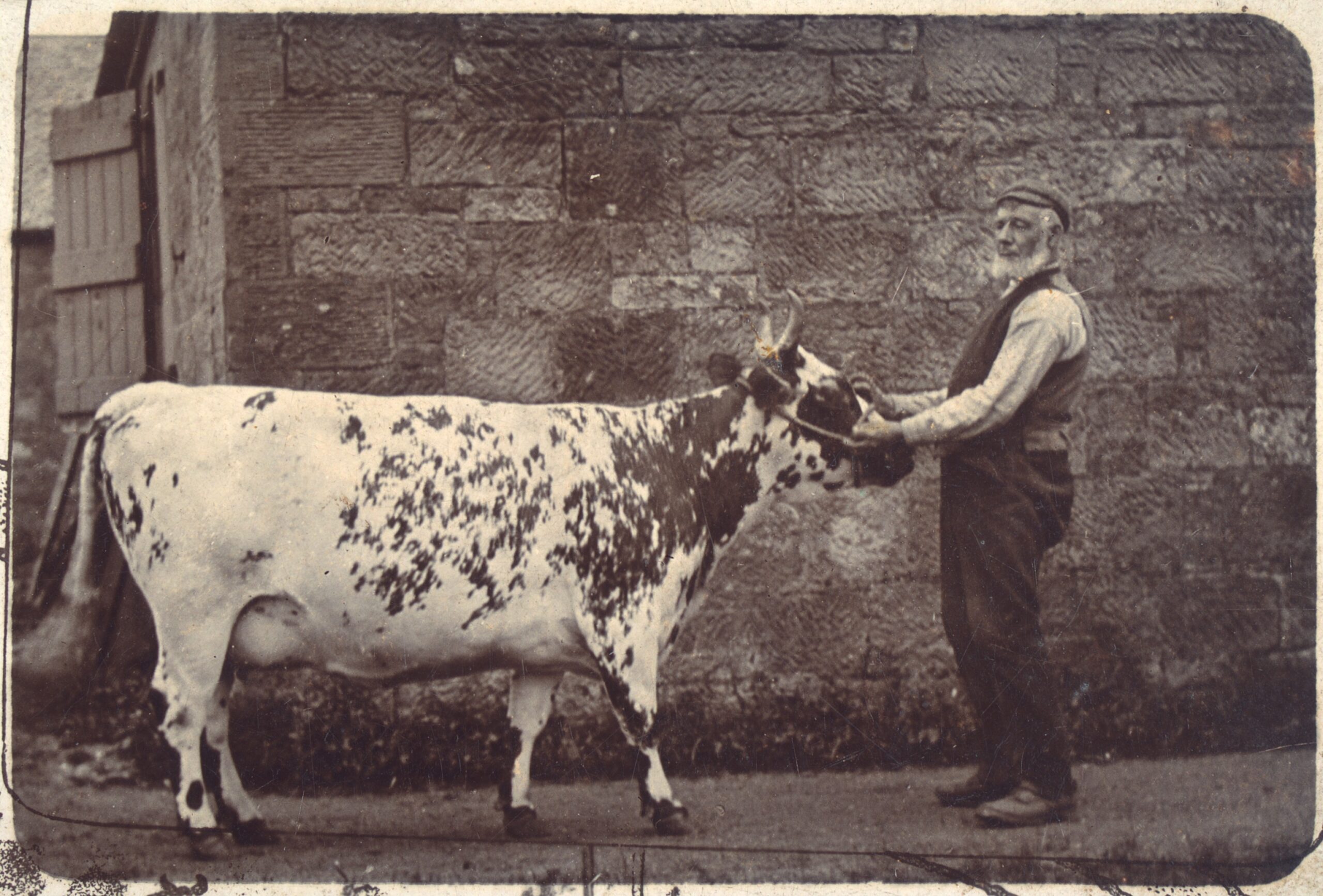
© National Museums Scotland. Licensor trove.scot
Instead of using a picture of his wife or family, he decided to use a photograph of himself and his favourite cow on a Christmas card!
Maybe Mr Frame was so proud of his livestock that he wanted to show them off to his family and friends!
And isn’t that what Christmas is all about? We say, cheers to Mr Frame. With or without your favourite livestock, we hope you have a wonderful Christmas and a good start to the new year.
Want to find out more about Christmas in Scotland?
From a Christmas ghost story to Christmas with Mary Queen of Scots – there are many more stories from Scotland’s festive past on our blog.
Want to get new stories hot off the press into your inbox? Then subscribe to our blog newsletter!
Header image: Scottish architect Jack Coia drew this Christmas card showing himself behind the wheel sending season’s greetings. Zoom in on Canmore

